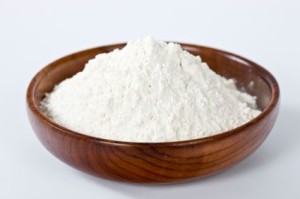US Secretary of State for Defense Donald Rumsfeld told the defense department in 2002, ‘There are known knowns. There are things we know that we know. There are known unknowns. That is to say, there are things that we now know we don’t know.’
Sorta like E. coli O121 and flour, I guess.
Stephanie Pappas of Live Science and I chatted last week about what’s up with FDA’s recommendation that folks don’t eat raw dough and why don’t they make the same warning about produce – after Slate posted something about the recommendation being oppressive.
Friend and colleague Jenny Scott answered it better than I did.
“We just want to provide consumers with the best information to take steps to reduce their risk,” said Jenny Scott, a senior adviser in the office of food safety at the FDA Center for Food Safety and Applied Nutrition. “The same thing happens when we have a produce outbreak.”
But the ways that people traditionally use flour did influence both the timing and the content of the recommendation. Typically, Scott told Live Science, people don’t eat raw flour in large quantities.
“Because people donꞌt think of raw flour as being a concern, that’s one of the reasons we’re making the effort to get the information out,” she said. The risk of illness from raw flour is low, she said, but then, so is the risk from raw produce.
The current flour-related outbreak is the second of two such outbreaks in the past seven years. The earlier one was a 2009 outbreak of another strain of E. coli caused by Nestlé Toll House prepackaged cookie dough, which — surprise, surprise — people were eating raw. Exhibiting a clear-eyed realism about human nature, Nestlé opted to start heat-treating all of the flour in its raw cookie dough.
Known unknowns
Food safety experts are now aware of the flour risk, but are only beginning to understand it. Outbreaks related to produce have been studied intensively for two decades, starting with a massive outbreak of infection with the parasite Cyclospora in 1996 (it eventually was traced to raspberries imported from Guatemala). By comparison, there isn’t much data on the prevalence of pathogens in flour, said Ben Chapman, a professor of food safety at North Carolina State University.
“Over 20 years, we have a pretty good understanding, or a better understanding, of fresh produce consumption, but when it comes to flour, we don’t know,” Chapman told Live Science. “It’s hard to make risk-management decisions based on unknowns.”
No one really knows how General Mills’ flour became contaminated, or if contamination is a widespread problem among other brands. E. coli can spread through animal feces, so wildlife pooping in and around fields might be the culprit. But untreated irrigation water could spread the bacteria, too, Chapman said, or there could be some sort of cross-contamination during the milling process. No one knows how long E. coli or other pathogens persist in dry foods like flour, he said (literature points to it being a long time though if Salmonella is a model; thanks Larry Beuchat, Linda Harris and others -ben).
“It’s still relatively new for us to be looking at this as a community,” he said (there is this great 2007 JFP paper by Bill Sperber that has some info on flour -ben).
As for produce, which is currently responsible for far more outbreaks than raw flour, the FDA is making strides on safety. The agency recently released a new Produce Safety rule under the FDA Food Safety Modernization Act that requires specific water quality guidelines and testing for irrigation water, rules for manure and compost use, and standards related to worker hygiene and equipment and tools. Raw sprouts, the culprit in 42 outbreaks between 1996 and 2014, get special attention under the new rule.
But with huge grain-consuming companies like Nestlé and General Mills linked to outbreaks, producers will be examining their supply chains and processing practices, Chapman said.
“It’s bad business, being linked to outbreaks,” he said.
